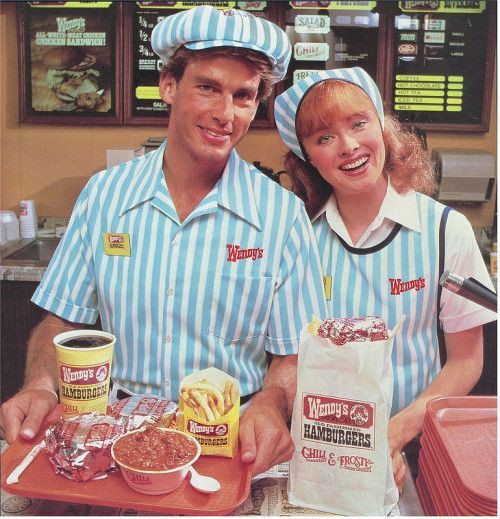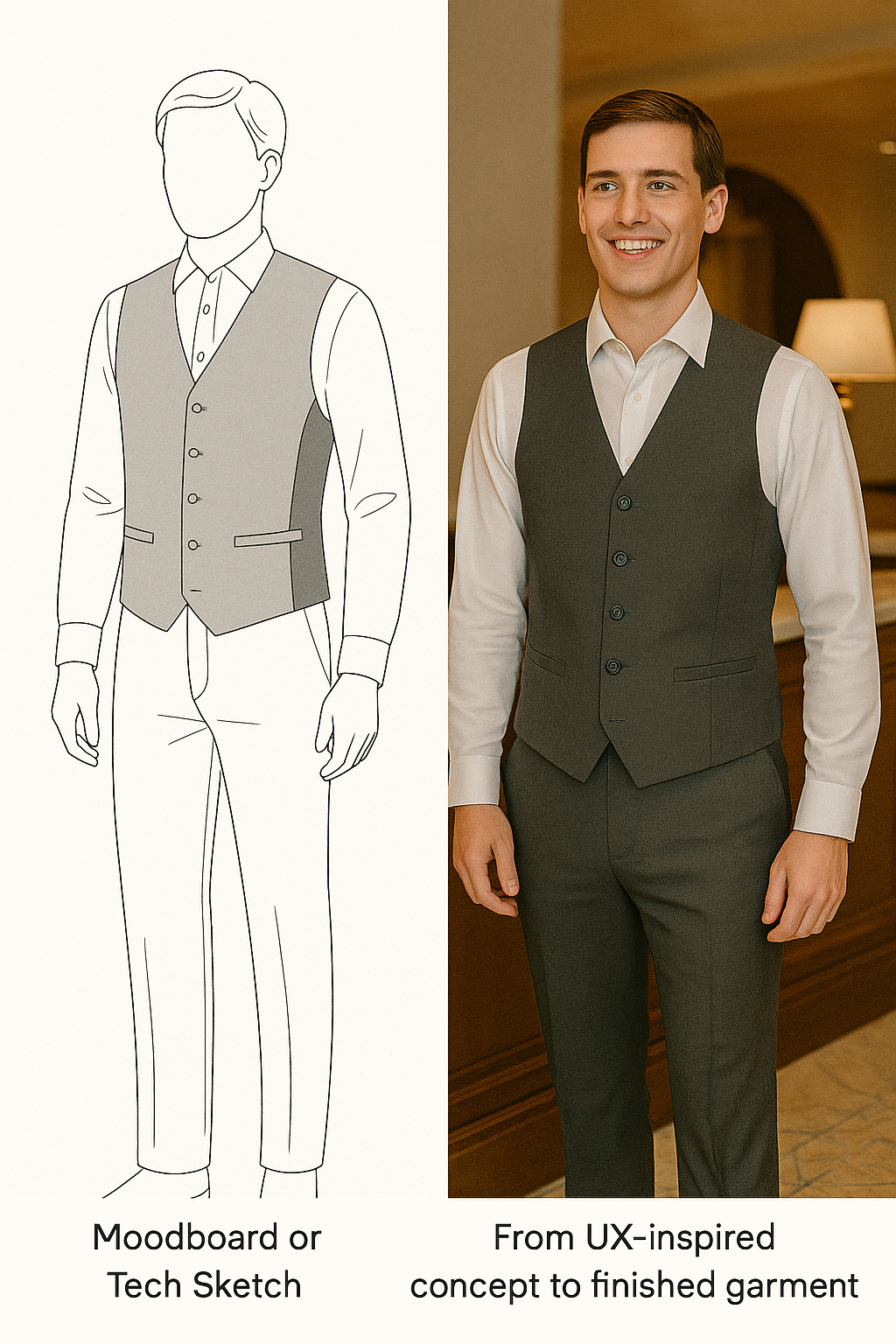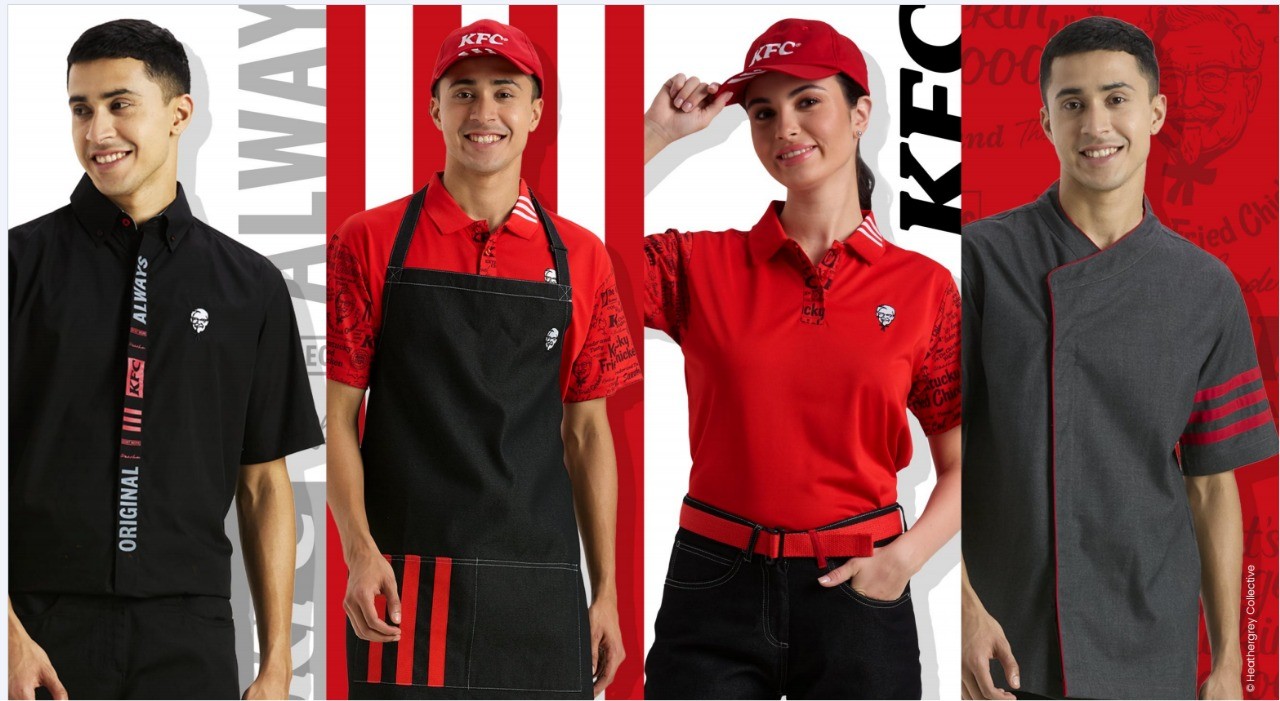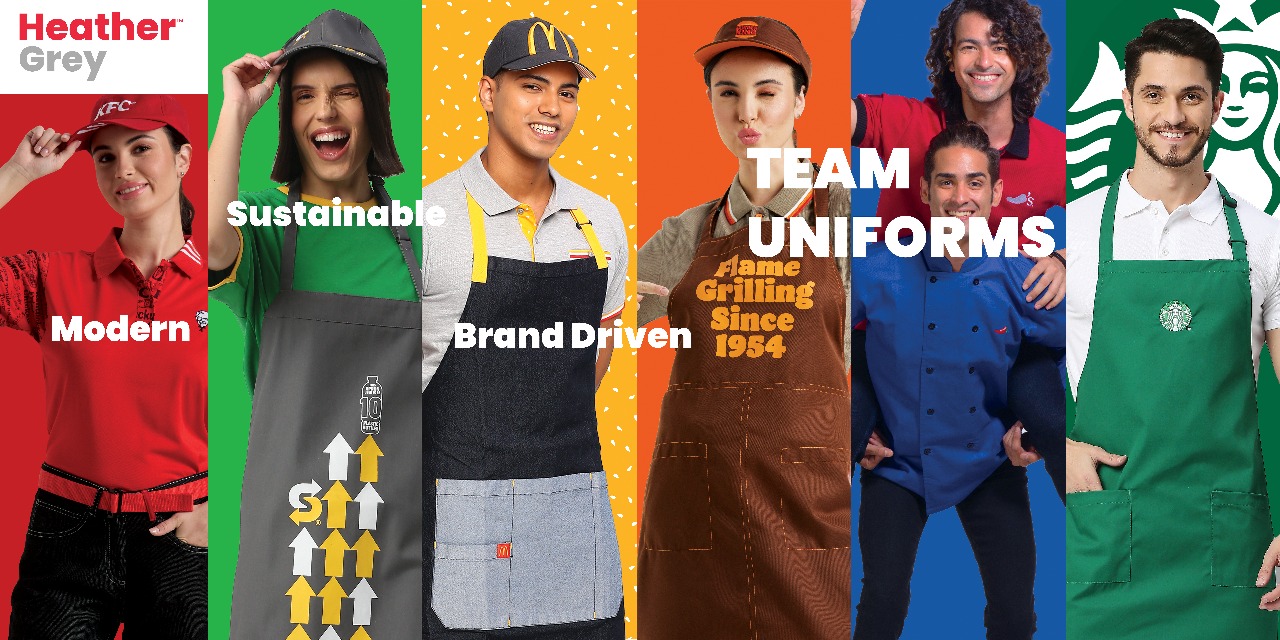
We’re a full-service product company for foodservice and hospitality. We design, manufacture, and deliver uniforms and linens to you and your partners.
Popular articles
In the digital world, UX (User Experience) is a buzzword — a design philosophy that makes websites and apps intuitive, seamless, and enjoyable. But zoom out of the digital sphere for a moment, and you'll realize something important: UX doesn’t stop at screens. It extends into the real world — to spaces, services, and yes, even uniforms.
What someone wears during their workday directly affects how they feel, move, interact with customers, and carry out tasks. Just like poorly designed software causes frustration, a poorly designed uniform causes friction in real-world experiences.
Let’s explore how the principles of UX are reshaping the world of uniforms — and why brands, especially in hospitality, F&B, and retail, should start treating their uniforms as a user experience touchpoint.
A Brief History: From Utility to Experience
Uniforms began with function first — think Roman centurions or military tunics. The design was about identity, hierarchy, and practicality. Over time, as workplaces evolved and industries diversified, uniforms became a part of brand storytelling.
).png)
- In the 1950s, airlines like Pan Am introduced glamorous uniforms for air hostesses — blending brand identity with aspirational fashion.
- In the 1980s and 90s, fast food uniforms prioritized recognition, efficiency, and durability.

- By the 2000s, luxury hotels and modern retailers began focusing on aesthetic cohesion and comfort, borrowing ideas from fashion design.
But it wasn’t until recently that uniform designers started borrowing from UX principles — putting the wearer at the center of the design process.
What Does UX Look Like in Uniform Design?
Let’s apply classic UX questions to uniform design:
- Is it usable?
Can employees move freely? Can they do all the physical tasks their job demands without adjusting their clothing constantly? - Is it accessible?
Does it suit all body types, skin tones, genders, and cultural considerations? - Is it intuitive?
Are fastenings, pockets, aprons, and accessories logically placed for quick access? - Is it satisfying?
Does the employee feel confident and proud wearing it? Does it boost morale and presence? - Is it responsive?
Does it adapt to the climate, shift hours, indoor/outdoor transitions, or sweat and movement?

If your uniform can say “yes” to these, then you’re not just designing clothes — you’re crafting a real-world UX system.
Dragging Inspiration from Digital UX: Parallels & Learnings
| Digital UX Principle | Real-World Uniform UX |
|---|---|
| Mobile-first design | Climate-adaptive, movement-first materials |
| Accessibility settings | Inclusive sizing and unisex tailoring |
| Visual hierarchy | Use of color blocks and trims to signal roles or seniority |
| Wireframing and prototyping | Sampling and wear testing for real-world feedback |
| Micro-interactions | Hidden pockets, stretch panels, smart fastenings |
Just as websites are A/B tested and iterated based on data, uniforms today undergo fit trials, fabric testing, and wearer feedback loops. This evolution is UX in action.
Real-World Example: Uniform UX in Action
Imagine a bartender in a tropical resort. Now ask yourself:
- Does the uniform breathe in 35°C heat?
- Does it have discreet yet functional towel loops?
- Can it handle spills and be washed daily without fading?
- Does it look polished under dim evening lighting?
If the answer is yes, it means someone designed this uniform with the same care you’d apply to an app interface or a smart device. That’s uniform UX.
Why This Matters for Brands
When brands invest in thoughtful uniforms, they're not just ticking a dress code box — they’re improving employee performance, guest satisfaction, and overall brand perception. Some real benefits:
- Fewer complaints about discomfort or overheating
- Increased confidence and better body language among staff
- Brand consistency across different climates, roles, or shifts
- Better staff retention, thanks to small but meaningful UX-driven details
The Future: Smart Uniforms & Experience Design
We're already seeing the next frontier: smart fabrics, wearables, anti-microbial finishes, and seasonal uniform capsules that adjust with the environment. Uniforms are becoming interactive layers between humans and the space they work in — much like screens are for digital interactions.
In Closing: UX Is a Mindset, Not a Medium
At Heather Grey Collective, we believe uniform design is an extension of brand strategy and human experience. Whether we’re outfitting a luxury resort in Bali or a fast-casual chain in Mexico, our approach always begins with the people who wear the clothes. Because just like apps need to “feel right,” so do uniforms. That’s not just design — that’s real-world UX.
Ready to redefine hospitality fashion with us? For more insights into how design impacts branding, especially through elements like uniforms, we recommend reading about The Global Branding Secrets of U.S. Fast-Food Chains: Marketing, Design, Uniforms. Contact us at enquiry@heathergreycollective.com to explore sustainable uniform solutions that make an impact.




